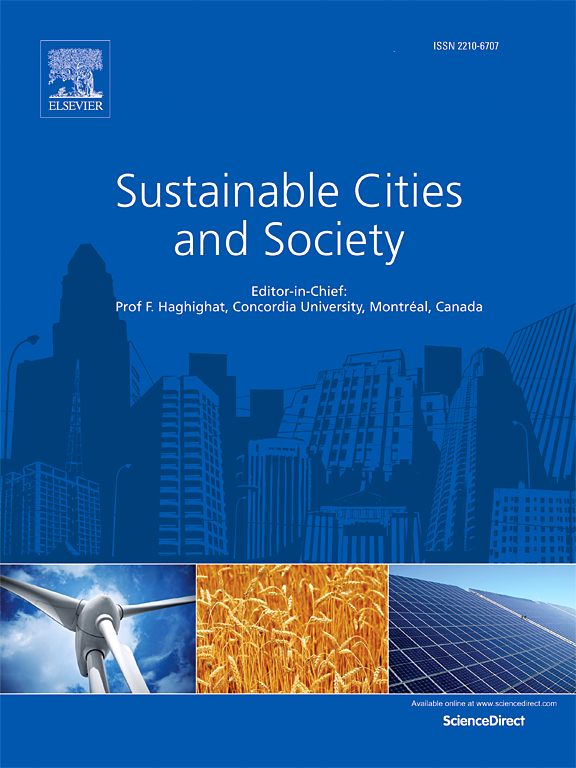The synthetical effects of passive radiative cooling building envelopes and surrounding buildings on building daylighting and energy performance: A case study in Miami
IF 10.5
1区 工程技术
Q1 CONSTRUCTION & BUILDING TECHNOLOGY
引用次数: 0
Abstract
Passive radiative cooling (PRC) technology has been incorporated into buildings, especially in the form of PRC building envelopes due to its energy-free and eco-friendly features. However, most existing studies focused on applying PRC building envelopes to an isolated building, while scarce research has considered the impacts of shading and reflection from surrounding highly reflective PRC buildings on building performance. To bridge the gap, a case study was conducted on a high-rise apartment (HA) located at the center of a nine-building community in Miami, Florida. The synthetical effects of opaque PRC building envelopes and surrounding buildings (SBs) on daylighting and energy performance were numerically analyzed through Radiance and EnergyPlus with variations in radiative cooling materials (RCMs), building orientation, and community layout. The results show that with the adoption of RCMs on the object HA, neglection of SBs can overestimate cumulative radiation on exterior walls by 96.19 %, spatial daylight autonomy (sDA) by 39.13 %, and total air conditioning energy consumption by 8.28 %, and underestimate spatial glare autonomy (sGA) by 21.27 %. Optimizing the synergistic effects of RCMs and SBs can strike a balance between daylighting and energy performance, yielding a of 86.28 %, a of 93.41 %, and an energy-saving rate of 16.28 %.
求助全文
约1分钟内获得全文
求助全文
来源期刊

Sustainable Cities and Society
Social Sciences-Geography, Planning and Development
CiteScore
22.00
自引率
13.70%
发文量
810
审稿时长
27 days
期刊介绍:
Sustainable Cities and Society (SCS) is an international journal that focuses on fundamental and applied research to promote environmentally sustainable and socially resilient cities. The journal welcomes cross-cutting, multi-disciplinary research in various areas, including:
1. Smart cities and resilient environments;
2. Alternative/clean energy sources, energy distribution, distributed energy generation, and energy demand reduction/management;
3. Monitoring and improving air quality in built environment and cities (e.g., healthy built environment and air quality management);
4. Energy efficient, low/zero carbon, and green buildings/communities;
5. Climate change mitigation and adaptation in urban environments;
6. Green infrastructure and BMPs;
7. Environmental Footprint accounting and management;
8. Urban agriculture and forestry;
9. ICT, smart grid and intelligent infrastructure;
10. Urban design/planning, regulations, legislation, certification, economics, and policy;
11. Social aspects, impacts and resiliency of cities;
12. Behavior monitoring, analysis and change within urban communities;
13. Health monitoring and improvement;
14. Nexus issues related to sustainable cities and societies;
15. Smart city governance;
16. Decision Support Systems for trade-off and uncertainty analysis for improved management of cities and society;
17. Big data, machine learning, and artificial intelligence applications and case studies;
18. Critical infrastructure protection, including security, privacy, forensics, and reliability issues of cyber-physical systems.
19. Water footprint reduction and urban water distribution, harvesting, treatment, reuse and management;
20. Waste reduction and recycling;
21. Wastewater collection, treatment and recycling;
22. Smart, clean and healthy transportation systems and infrastructure;
 求助内容:
求助内容: 应助结果提醒方式:
应助结果提醒方式:


